Study on the clinical correlation between serum total IgE level and peripheral blood eosinophil count in patients with eczema
Meng-Ge Zhang, Yue-Xuan Gao, Meng Tan, Zhi-Min Wu, Wen-Yu Wang, Xing-Wu Duan
1. Beijing University of Chinese Medicine, Beijing 100029, China
2. Dongzhimen Hospital, Beijing University of Chinese Medicine, Beijing 100700, China
Keywords:Eczema IgE EOS Severity Correlation
ABSTRACT Objective: To explore the correlation between the expression of serum total IgE level and peripheral blood EOS count in patients with eczema and the severity of clinical eczema.Methods: The EASI and pruritus VAS score were used to evaluate the disease severity of 100 patients with eczema.According to the EASI score,patients with eczema were divided into three groups: mild (<7 points)、moderate (7-15 points)and severe (>15 points).At the same time, the serum total IgE level and peripheral blood EOS count were tested before and after the 4-week Chinese medicine treatment. Results: The serum total IgE level of 42%of eczema patients increased, and the peripheral blood EOS count increased in 26%. In the three groups of mild, moderate, and severe, as the severity of eczema increased, the level of serum total IgE and peripheral blood EOS count continued to increase, and the positive rate increased significantly(all P<0.05).In terms of correlation analysis, the study showed that in patients with eczema total IgE level and EASI score (r=0.421, P<0.01), EOS count and EASI score (r=0.326, P<0.01), EOS count and pruritus VAS score (r=0.529, P<0.01) all show relatively weak positive correlation;and a high proportion of patients had the same changes in IgE and EOS after treatment(82% of IgE is consistent with EASI, 76% of EOS is consistent with EASI). Conclusion: This study shows that the total IgE level and EOS count of patients with eczema are positively correlated with the severity of eczema, but at the same time this correlation is relatively limited. In clinical practice, it is necessary to combine the dynamic changes of the individual's own indicators in order to diagnose, comprehensively treat and evaluate eczema. Provide greater reference value in other aspects.
1. Introduction
Eczema is a common clinical inflammatory skin disease caused by a variety of internal and external factors. Its main characteristics are multi-morphology, symmetrical distribution, and obvious itching.Its condition is repeated and difficult to cure, which seriously affects the quality of life of patients [1-2]. The incidence of this disease is high, the prevalence rate in the general population in my country is about 9.26% [3], and 10.3% in the United States [4]. The etiology of eczema is complicated, and the specific pathogenesis has not yet been elucidated. The allergy caused by immune dysfunction plays an important role in the occurrence of the disease [5]. As two commonly used laboratory test indicators to reflect allergies, serum total immunoglobulin E (IgE) and peripheral blood eosinophils(EOS) have been confirmed by more and more studies that they will increase during the onset of eczema [6].
However, the correlation between these two indicators and the severity of clinical eczema is less studied, especially in patients with eczema before and after treatment, the severity of the skin lesions and the changes in the two indicators have not been reported.Therefore, this study intends to detect the total serum IgE level and the peripheral blood EOS count in patients with eczema, analyze the relationship between it and the eczema area and severity index(EASI) score [7] and the pruritus VAS score [8], and according to the individual's own changes in serum total IgE level, peripheral blood EOS count and EASI score before and after treatment, further explore its relationship with the severity of eczema, in order to better guide the clinical practice. The report is now as follows.
2. Materials and methods
2.1 General information
100 patients with eczema who attended the Department of Dermatology, Dongzhimen Hospital, Beijing University of Traditional Chinese Medicine from September 2019 to December 2020 were selected as the research objects.Inclusion criteria:①Comply with the diagnostic criteria for eczema in the "Eczema Diagnosis and Treatment Guidelines (2011)" formulated by the Immunology Group of the Chinese Medical Association Dermatovenereology Branch; ②Age between 18 and 70 years old, regardless of gender;③The patients themselves agreed to participate in the clinical study and signed an informed consent form. In consideration of factors such as improving the safety of clinical trials and avoiding the influence of pre-study drugs on this study, the exclusion criteria are formulated as follows: ①Patients with autoimmune diseases or major systemic diseases such as cardiovascular, liver and kidney, lungs; ②Patients with fungal infections, tumors and other factors; ③Patients who have received immunomodulatory treatment in the past month, or who have taken steroid drugs in the past two weeks, or those who have taken antihistamines or topical steroid drugs in the past one week.
Among the 100 patients, 52 were males and 48 were females; aged 20-70 years old, with an average of 42.1±7.3 years; course of disease was 1 week to 12 years, with an average of 4.1±2.3 years; 18 cases of acute eczema, 32 cases of subacute eczema, chronic 50 cases of eczema.
2.2 Observation indicators and methods
At the time of enrollment, the general clinical data of the patients were recorded, the EASI score and the pruritus VAS score were completed. At the same time, the total serum IgE level and the peripheral blood EOS count were tested. After 4 weeks of treatment with traditional Chinese medicine, the EASI score,total IgE and EOS count were measured again. Among them, in addition to the last observation of the changes in the indicators before and after the treatment, the indicators measured before and after the treatment are used, and the other observations are based on the results measured at the time of enrollment.
2.2.1 EASI score
According to Professor Zhao Bian's eczema area and severity index scoring method [7], the skin lesions of the patients were scored by EASI by a dermatologist with standardized training. As there is currently no unified standard for the severity of eczema based on the EASI score, this study refers to recent literature [10] and combined with the actual clinical situation to classify patients with eczema as mild (<7 points) and moderate (7-15) according to the EASI score.Points), severe (>15 points) three groups.
2.2.2 VAS score for itchingUsing a 10cm long visual scale, the left "0" represents no itching,the right "10" represents the most severe itching that is unbearable,and the middle represents different degrees of itching. The patients are marked on the scale according to their own degree of itching, and the obtained value is the VAS score [8].
2.2.3 Determination of total IgE level and EOS count
All patients were collected early morning fasting venous blood 3ml each in two tubes before and after treatment, and their blood routine and serum total IgE level were measured respectively. The total IgE in the serum is determined by the turbidimetric method with an automatic plasma protein analyzer, and the reagents are provided by Siemens Medical Diagnostics, Germany. Peripheral blood EOS is detected by the direct counting method and the automatic blood cell analyzer provided by Shenzhen Mindray Biological Company.
In the test results of this subject, the total serum IgE content
100IU/ml was regarded as abnormal detection, and counted as(+); the peripheral blood EOS count>0.5×10 9 /L was regarded as abnormal detection, and counted as (+).
2.3 Statistical processing
All data were input using Epidata 3.1 software and analyzed using SPSS23.0 software. When the statistical description of the measurement data conforms to the normal distribution, it is expressed by the mean±standard deviation(±s) ; when it does not conform to the normal distribution, it is expressed by the quartile.The comparison between the two groups is expressed by t-test or Mann-Whitney test, single-factor analysis of variance or Kruskal-Wallis test was used for comparison between multiple groups; count data was expressed as a percentage (%), and comparison between groups was performed by Chi-square test; the correlation between data was analyzed by Spearman rank correlation analysis. The difference is statistically significant when P<0.05.
3. Results
3.1 Total IgE level and EOS count among different severity of eczema
According to the EASI score, 100 patients with eczema were divided into three groups: mild (45 cases, 45%), moderate (35 cases,35%), and severe (20 cases, 20%). The total serum IgE level between the different groups , The quartile of EOS count in peripheral blood and the positive rate of each group are shown in Table 1. It can be seen that the total IgE level (H=18.557, P<0.05) and EOS count(H=9.669, P<0.05) between the three groups of mild, moderate and severe are statistically significant, as the severity of eczema increases Continuously increasing; the positive rate of total IgE level(χ2=10.825, P<0.05) and EOS count (χ2=9.860, P<0.05) also increased significantly as the severity increased, and the difference was statistically significant.

Table 1 The relationship between total IgE level, EOS count and the severity of eczema
3.2 Correlation analysis of EASI and pruritus VAS score with total IgE level and EOS count in patients with eczema
Correlation analysis showed that there was a positive correlation between total IgE level and EASI score, EOS count and EASI score, EOS count and VAS score for itching (P<0.01), but the three groups showed relatively weak correlation. There was no significant correlation between the total IgE level and the VAS score of pruritus.See Table 2 and Figure 1-4 for details
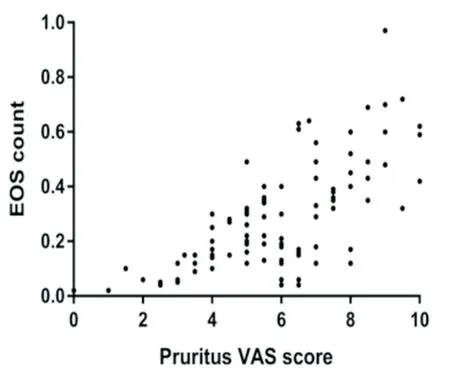
Figure 4 Relationship between EOS count and Pruritus VAS score

Table 2 Correlation analysis of eczema EASI, pruritus VAS score, total IgE level,EOS count.
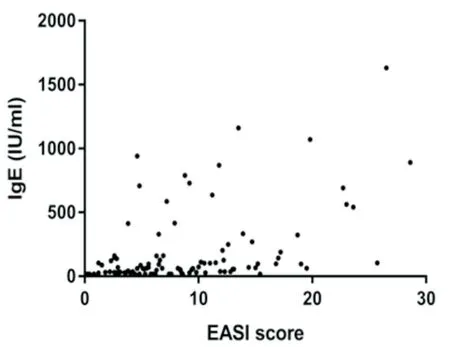
Figure 1 Relationship between total IgE and EASI score
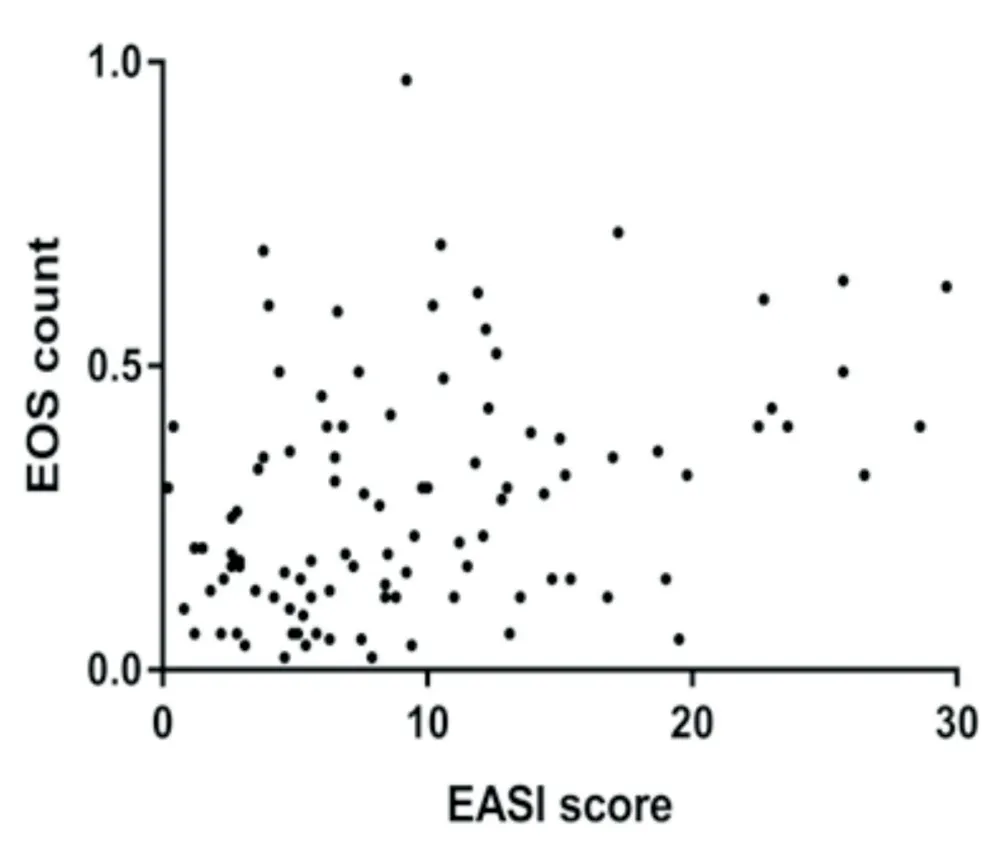
Figure 2 Relationship between EOS count and EASI score
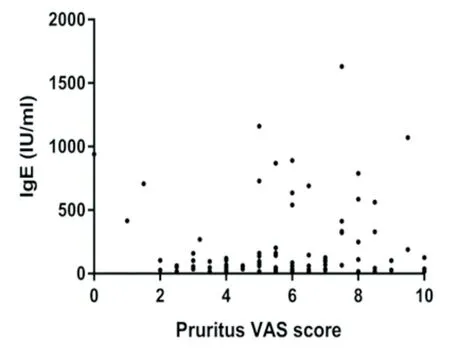
Figure 3 Relationship between total IgE and Pruritus VAS score
3.3 Changes in total IgE level and EOS count in patients with eczema before and after treatment
Among 100 patients with eczema, 82 (82%) patients had the same changes in total IgE level after treatment and EASI score, and 76(76%) patients had the same changes in EOS count and EASI score after treatment (Consistent includes both indicators are rising or both falling, inconsistency includes one rising and the other falling, or only one indicator does not change). It can be seen that the changes in the total IgE level and EOS count of a high proportion of patients after treatment are consistent with the changes in the EASI score.
4. Discussion
The pathogenesis of eczema is complicated and is related to various factors such as immunity, heredity, infection, environmental diet,etc. Modern medicine mostly believes that the disease is a delayed type allergy mediated by T cells [11], while IgE and EOS play important roles in its pathogenesis [12-13]. IgE is a key molecule that can activate effector cells involved in allergic inflammation. Studies have found that IgE mainly acts through its receptors on mast cells, basophils and other cells, and it can also activate these cells through the galectin-3 signaling pathway, leading to the occurrence of autoimmune diseases [14 ].According to research, after IgE binds to external antigens, it can also promote the increase of blood EOS through two main ways: one is to bind to the IgE receptor on mast cells to stimulate mast cells to release EOS chemokines; the other is to be contained in the epidermis Langerhans cells are phagocytosed and present antigens to T cells to activate them and produce a variety of cytokines, including EOS chemokines [6]. After EOS are activated by various factors, they release a large number of transmitters and metabolites such as cytokines, lipid-like mediators, and strong basic granule proteins at the site of inflammation, causing immune damage and stimulating basophils. The recruitment of mast cells and neutrophils accelerates the inflammatory process, the progression of skin lesions and itching [15-17]. In short, IgE and EOS are closely related and play key roles in the pathogenesis of eczema and other allergic diseases.
In an epidemiological survey of 2662 patients with multicenter eczema[18], 52.2% of patients had elevated serum total IgE level, and 31.8% of patients had manifestations of EOS. In our study, 42% of patients with eczema had elevated serum total IgE level, and 26% of patients had elevated EOS count in their peripheral blood. Regarding the relationship between laboratory tests and the severity of eczema,this study shows that as the severity of eczema increases, the total serum IgE level and the peripheral blood EOS count increase simultaneously, and the positive rate gradually increases. This is consistent with the research results of Kiiski [19] and Liu FT [20] ,confirming that the total IgE level and EOS count are closely related to the incidence and severity of eczema. In terms of correlation analysis, this study showed that the total IgE level of patients with eczema was positively correlated with EASI score, EOS count was positively correlated with EASI score, and pruritus VAS score, which was similar to the results of the correlation study by Zhang Jianzhong[10]. On the one hand, this is consistent with the results of the abovementioned laboratory examination and the relationship between eczema severity, and once again verified the reliability of the two indicators used to judge the severity of eczema; on the other hand,the low correlation coefficient indicates weak correlation between each other. It is suggested that it is biased to judge the severity of eczema based solely on the level of laboratory examinations.In order to further explore the correlation, we use the individual patient as a unit to observe the changes in the severity of the skin lesions before and after treatment and the changes in laboratory indicators in order to reduce errors and observe more individually.The results show that a high proportion of patients after treatment The changes in the total IgE level and EOS count are consistent with the changes in the EASI score, indicating that the patients,own total IgE level, EOS count indicators and the changes in the severity of eczema are highly consistent, and the before and after comparison of the individual’s own indicators can reflect more accurately to a certain extent Severity of eczema and treatment effect. The above analysis fully illustrates that in the clinical diagnosis and treatment of eczema, monitoring the total serum IgE level and the peripheral blood EOS count is of great significance for assessing the severity of eczema and improving the situation, but it must be combined with the dynamic changes of the patient’s individual laboratory indicators.
In summary, this study showed that total serum IgE level and peripheral blood EOS count in patients with eczema are positively correlated with the severity of eczema, confirming that both are involved in the pathogenesis of eczema and can be used as indicators for judging the severity of eczema and disease activity. But at the same time, this correlation is relatively limited. It is necessary to combine the dynamic changes of the individual's own indicators in clinical practice to provide greater reference value for the diagnosis,comprehensive treatment and efficacy evaluation of eczema. In addition, considering the insufficient sample size, the relationship still needs further in-depth study of large samples.
Author's contribution
Zhang Mengge: The person in charge of the clinical research implementation student, completed the collection of more than 60 cases, guided the data entry and analysis, and wrote the paper; Gao Yuexuan: Clinical trial quality management and case collection; Tan Meng: Case collection and data entry; Wu Zhimin: Case collection;Wang Wenyu: Responsible for the proofreading and improvement of articles; Duan Xingwu: Research director and instructor.
There is no conflict of interest between the authors.
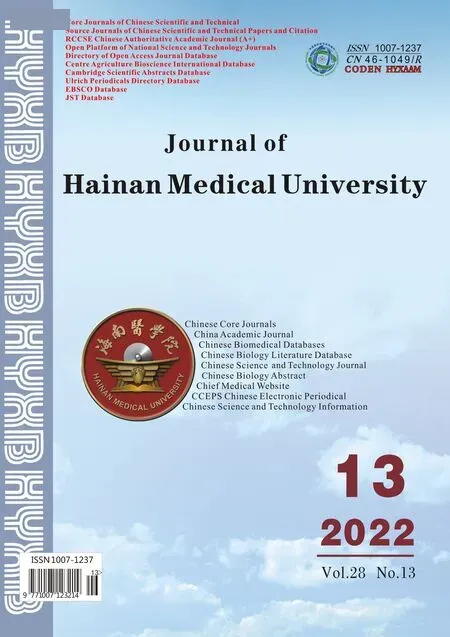 Journal of Hainan Medical College2022年13期
Journal of Hainan Medical College2022年13期
- Journal of Hainan Medical College的其它文章
- Study on key genes and pathways of myocardial fibrosis and prediction of effective traditional Chinese medicine
- Effect of Qingguangan Ⅱ on Rho/ROCK associated factors in the retina of DBA/2J mice
- Clinical effect of governor meridian moxibustion on treatment of lumbar disc protrusion: A meta analysis
- Study on the correlation between Serum HDAC3, HMGB-1 and nonvalvular atrial fibrillation
- Effect of HK3 on immune invasion, proliferation and invasion of colon cancer cells
- Canagliflozin attenuates hypertension induced myocardial hypertrophy and fibrosis via RAS and TGF-β1/Smad pathway
